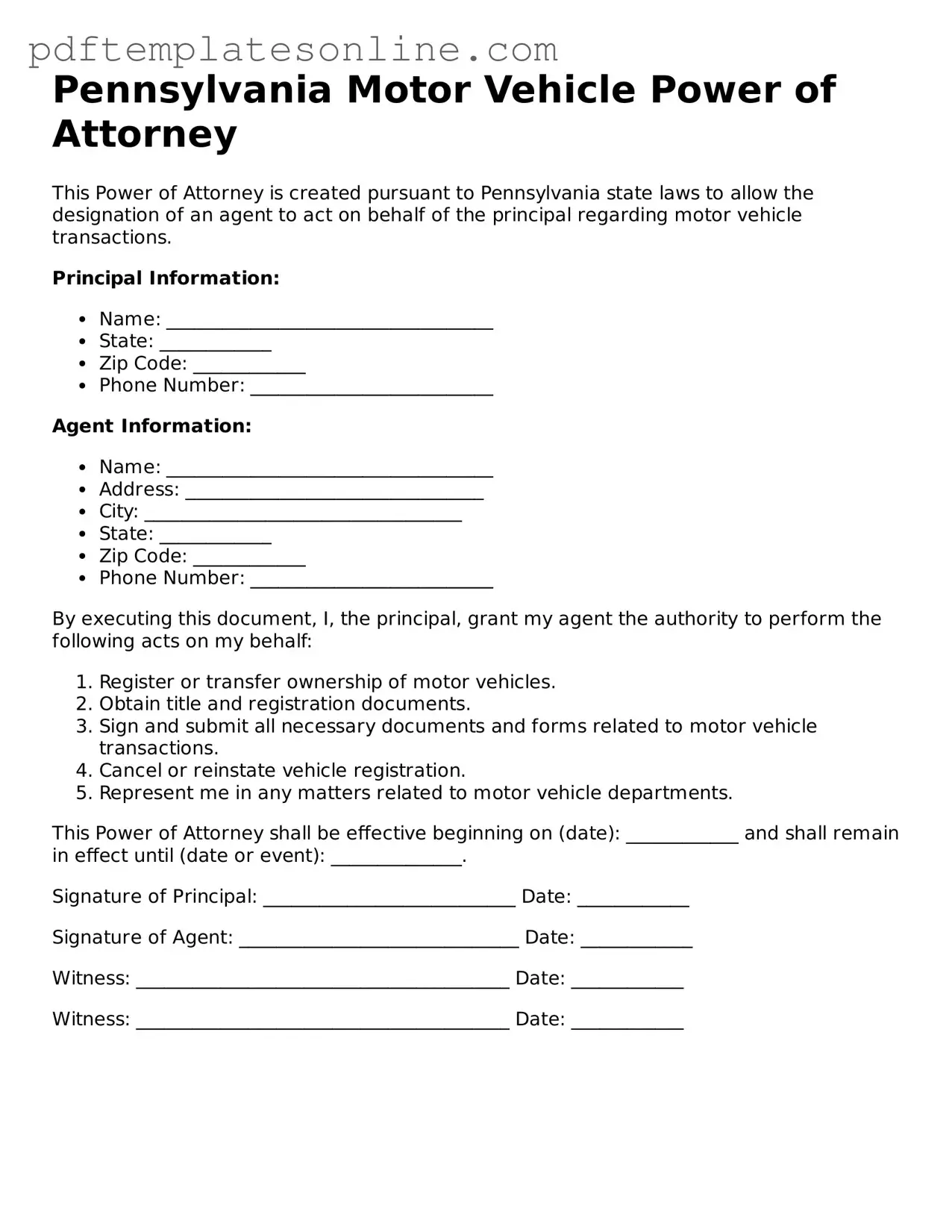Filling out the Pennsylvania Motor Vehicle Power of Attorney form can seem straightforward, but many individuals make common mistakes that can lead to delays or complications. Understanding these pitfalls is essential for ensuring a smooth process. One frequent error is not providing complete information. This form requires specific details about both the principal and the agent, including names, addresses, and signatures. Omitting any of this information can render the form invalid.
Another mistake often made is using incorrect dates. The date of signing is crucial for the validity of the document. If the date is missing or incorrectly filled out, it can create confusion regarding when the authority was granted. This can lead to challenges in executing the powers granted in the form, especially if there are disputes about the timing of the authority.
Additionally, many people fail to clearly specify the powers granted. The form allows for a range of powers, from transferring titles to handling registrations. If these powers are not clearly outlined, the agent may not be able to act effectively on behalf of the principal. It is important to ensure that all desired powers are explicitly mentioned to avoid any misunderstandings.
Another common oversight is not having the form notarized. While some may assume that a signature alone is sufficient, Pennsylvania law often requires notarization for the form to be legally binding. Without this crucial step, the document may not be accepted by the Department of Motor Vehicles or other entities.
Lastly, individuals sometimes forget to keep copies of the completed form. After submitting the Motor Vehicle Power of Attorney, it is wise to retain copies for personal records. This can be invaluable in case any questions arise later regarding the authority granted. Having a record ensures that both the principal and the agent are on the same page and can refer back to the original document when necessary.
